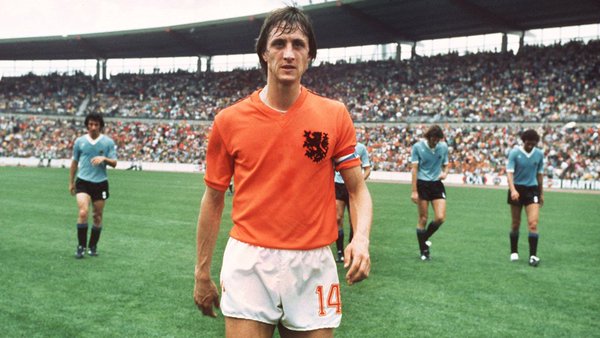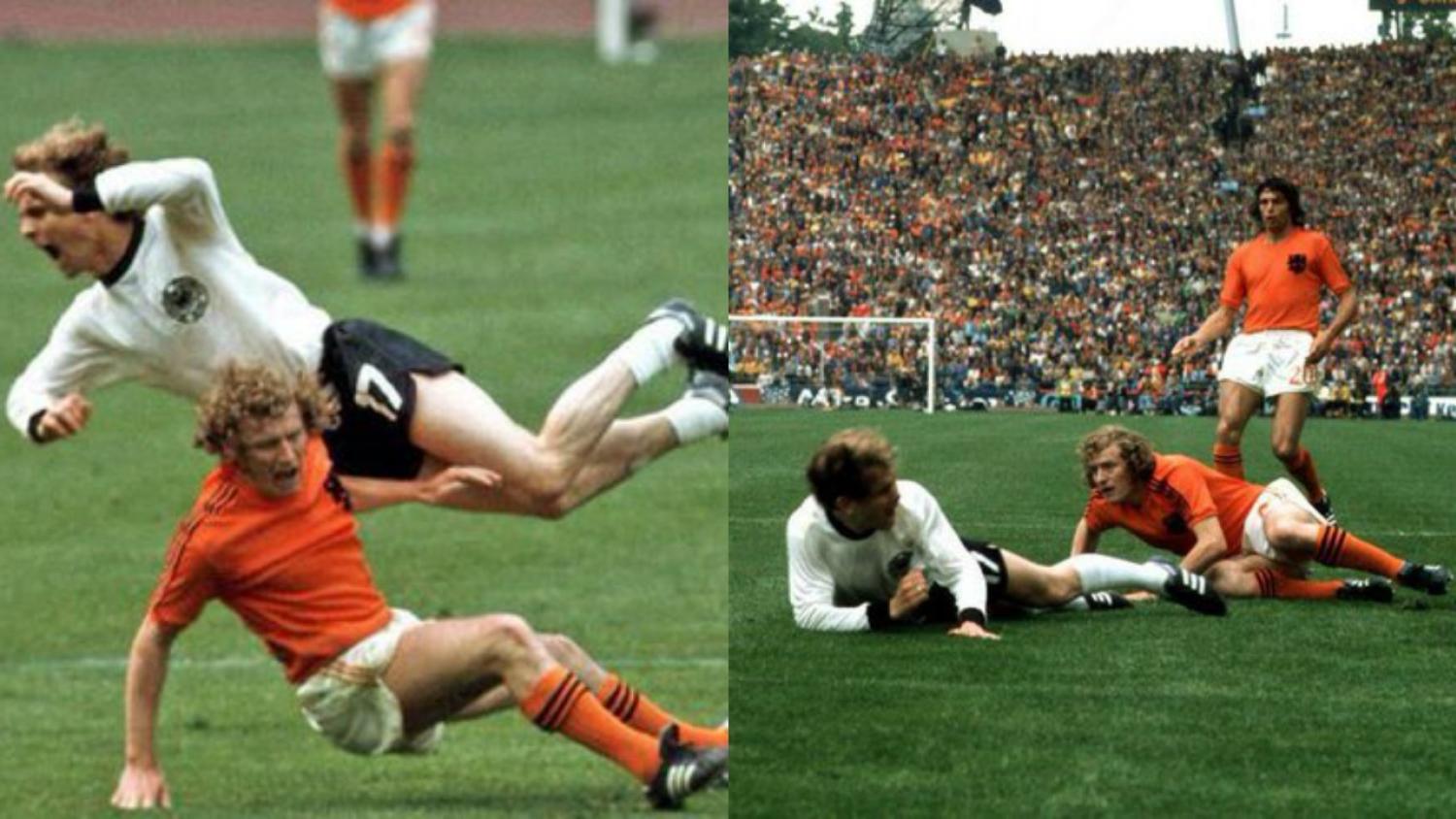Diving in soccer certainly predates the 1974 FIFA World Cup final, but on no other occasion has the ramifications of a flop been so clearly encapsulated and amplified.
The 1974 World Cup in West Germany served as a pageant for the Netherlands technique of Total Football, the tactical theory envisioning a side in which any outfield player can quickly take over the role of any other player on the pitch.
These transitions resulted in an organizational structure that was fluid, maintained and dynamic. According to defender Barry Hulshoff, Total Football was “about making space, coming into space, and organizing space-like architecture on the football pitch.”
With anyone successfully playing and moving between attack, midfield and defense, the Netherlands were uncontainable in any given on-field situation.
The philosophy, at its peak, was seen as the destroyer of defensive football — it was a victory for attacking ambition over pragmatic defensive structures. It was a distinctly unique approach to the game that required all ten outfield players possess enormous stamina and skill.
This group of Netherlands players, led by Johan Cruyff and Johan Neeskens, had both in abundance.

Johan Cruyff was a Dutch legend. Photo: @si_soccer | Twitter
The Netherlands were sensational throughout the 1974 World Cup. They topped their opening group by defeating Uruguay 2-0 and Bulgaria 4-1. In the second round, they defeated Argentina, East Germany and Brazil by a combined total of 8-0.
A meeting with the hosts West Germany in Munich beckoned. As powerful and talented as the West German team was, the Netherlands were the overwhelming favorites in the final match.
The game started better than the Dutch could’ve ever envisioned: before any German player had even touched the ball, the Netherlands connected on 13 straights passes before Cruyff was fouled in the box to earn a penalty. 75,000 spectators were hushed as Neeskens put the Oranje up 1-0 with only two minutes gone.
Dutch winger Johnny Rep later recalled the Netherlands' feeling after that opening goal: “We wanted to humiliate the Germans. It wasn’t something we’d thought about, but we did it. We started knocking the ball around — and we forgot to score a second.”
In the 26th minute, the unthinkable transpired — Germany were level in the most contestable of circumstances. With a rare foray into the Netherlands area, Bernd Holzenbein took a tumble in the box to win a penalty.
Replays show that, however rash the challenge, Holzenbein was going to ground before any contact had even been made. Holzenbein was looking for it, and he got it.
The Netherlands were stunned when Paul Breitner stepped up to level the score. The crowd in Munich was reinvigorated, sensing that the Netherlands had eased off and would have difficultly recovering.
Gerd Muller scored his 14th and final World Cup goal for West Germany in the 43rd minute and the Netherlands were unable to find a second of their own.
The inventors and purveyors of Total Football, the most proactive form of football the world had ever scene, were defeated. They were defeated by a dive.
40 years after the defeat, the result is still looked at with a mix of hurt and disbelief in the Netherlands. The dive is now known in the Netherlands as “Holzenbein’s schwalbe”, schwalbe being the German word for swallow — a bird which is known to drop quickly in flight.
Beautiful attacking football had been defeated by the dark arts. Deception had been the key to victory, not tactics or great individual skills.
The Netherlands have never been closer to winning a World Cup while diving has become a global epidemic that continues to rear its ugly head most prominently during the World Cup finals.
Follow me on Twitter: @ConmanFleming



